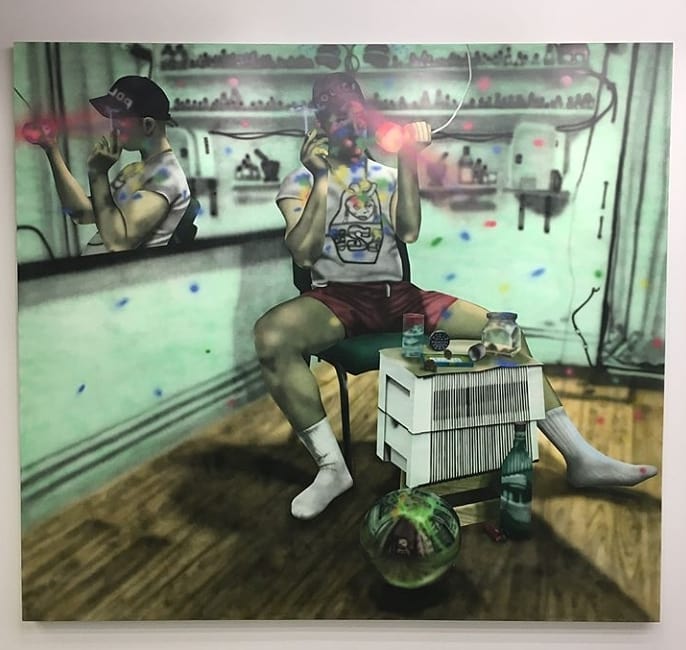Inaugurated in 1895 and still the most important event in the contemporary art world, the Venice Biennale hosts this year the works of 79 international artists and 89 national pavilions.
We found there intriguing 3D artworks.
Still on display until November 24.
“An exhibition should open people’s eyes to previously unconsidered ways of being in the world and thus change their view of that world.”
Ralph Rugoff, Curator of the 58th International Art Exhibition
“May You Live in Interesting Times” was the theme message that Ralph Rugoff, the Biennale’s curator, advanced to the artists. And they responded to the issues of our times with creations on climate apocalypse, racism and global inequality, feminism, fake news, the destruction of public sphere on the part of monopolised digital media and so many other tough topics, offering “a view of art’s social function as embracing both pleasure and critical thinking”.
As for our most familiar form of art, the 3D graphics, here’s five highlights:
- Jon Rafman
Dream Journal. 2016-2019
Single channel HD video, colour, stereo sound, 94’
Music by James Ferraro and Oneohtrix Point Never
Hosted in the central exhibition at the Arsenale, the video is a nightmare vision of a disturbing computer-generated world, exploring the effects of technology and information overload on the contemporary psyche.
The project initially arose from the artist’s daily practice of animating his dreams using hobbyist 3D software.
Rafman is recognized for his interdisciplinary practice that spans photography, sculpture, video, virtual reality, and installation.
He incorporates the rich vocabulary of online worlds to create poetic narratives that critically engage with the present.
The artist speaks about his gaming history in this interview for Berlinartlink.
Penny Rafferty: I have always wondered if you have a gaming history or if you just stalk the net?
Jon Rafman: There’s some history. I was one of the top Yoshi’s in the tri-state area during the Mario Kart 64 days. And I did get back into gaming while conducting research for my film ‘Codes of Honor’, but I have to say that was in a more documentarian role. Throughout that time I went to Chinatown Fair arcade in NYC almost every day for months and months, I spent hours interviewing pro-gamers about the good old times.
PR: Seductive nostalgia?
JR: Yeah, I’m attracted to this particular obsession and dedication that gamers have, as well as the extremely ephemeral histories that gaming communities have built up. I can see both the Sisyphean quality and the tragic beauty they inhabit. Gamers attempt to master something that is always becoming obsolete. For me, this is an apt metaphor for the accelerated age we now live in.
2. Ed Atkins
Old Food. 2017 – 2019
Installation with elements in different media: digital animations, panels with various texts, clothes racks with garments in tight rows.
Ed Atkins is a British contemporary artist best known for his video art and poetry. The CGI figures that populate his videos are self-proclaimed surrogates for the artist, animated by his voice and by his motion-captured body; they are “emotional crash – test dummies”, thirst into a torturous scenario of digital sentimentality.
True, but are you into video games? This limbo often is reminiscent of their aesthetics. Your films could be likened to watching a hacked game, with its photo-realistic imagery, slipping in and out of a surreal and stilted dialogue.
Ed Atkins for Dazed
Ed Atkins: I’m really more and more into video games. Less playing them than observing them, watching playthroughs, reading through the culture, etc. I try not to play them so much as they fill me up in such a dangerous way – they really do, it’s the best and worst, things that make me feel replete. There are loads of video game-inflected forms to the videos, totally. Forms that have already been swallowed back up by blockbuster cinema and trailers and all that – which is sort of where they came from anyways. The attention video games induct, the solace I find they can provide, the ways in which they genuinely empty me out… I would love to talk about video games in terrific detail.
3. Avery Singer
Calder (Saturday Night). 2017

Avery Singer’s paintings explore the limits of the medium. Instead of painting with brushes, she uses SketchUp, a 3-D modelling software popular with architects and engineers, to create digital compositions that are then projected and airbrushed on canvas.
Read an interview with the artist on processes, robots, and post-human painting.
4. Ian Cheng
BOB (Bag of Beliefs). 2018-2019
Artificial life form, infinite duration
“BOB advances Cheng’s use of simulation to focus on an individual agent’s capacity to deal with surprise: the subjective difference between expectations and perception. Over the course of its lifetime, BOB’s body, mind, and personality evolve to better confront the continuous stream of life’s surprises, and metabolize them into familiar routines. Crucially, BOB incorporates the tutoring influence of the viewer to help offset BOB’s temptation to only satisfy its immediate impulses and childhood biases.
As BOB dies many deaths – whether through failures of personality, bad parenting, random accident, or a life well lived – BOB may become synonymous with a reoccurring pattern of behavior, common across all BOB lifetimes, thereby manifesting the undying eternal characteristic of a god.”
Hope we’ve caught your attention. Read more about BOB on ARTNET.
5. Ryoji Ikeda
‘Data-verse’
The Japanese visual artist Ryoji Ikeda, in collaboration with the watchmaking company Audemars Piguet, presents “Data-verse”, an installation that translates processed information into images and sounds of the hidden facets of nature. This audiovisual piece, which is shown as the first part of a trilogy, marks the last chapter of Ikeda’s research, which began more than a decade ago.
The installation consists, in a first part, of a large scale screen accompanied by a music created through the obtained data, which harmonizes the high definition video projections. Generated by an extremely precise computer programming, the work comprises a minimalist electronic soundtrack and high definition video projections of scientific data.
Massive open source scientific data sets from various institutions — including CERN, NASA and the human genome project — were processed, transcribed, converted, transformed, and orchestrated to visualize and sonify the different dimensions co-existing in our world, from the microscopic, to the human, to the macroscopic.
Picture credit: Jon Rafman, Dream Journal 2016-2019
Georgiana Toea, Community Projects Manager AMC

